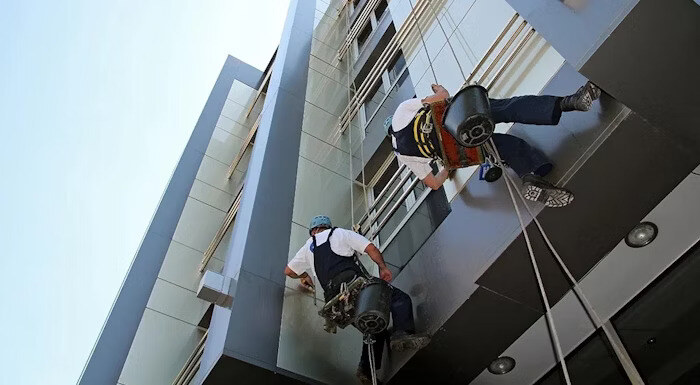
4 Ways CMMS Implementation Increases ROI & Cuts Maintenance Costs
Learn how a successful CMMS implementation can help you overcome reactive maintenance inefficiencies and maximize your overall return on investment ...
Solutions
Workplace Management Solutions
Real Estate Management Solutions
Maintenance Management Solutions
Energy Management Solutions
Engineering Document Management Solutions
Asset Management Solutions
Automate campus scheduling for classes, meetings, and exams with our EMS software.
Plan and manage conferences effortlessly with EMS software to impress guests and streamline operations.
Boost workplace flexibility and maximize space use with seamless desk and room booking.
Organize workplace or campus events smoothly, creating memorable experiences.
Optimize workspace, manage allocations efficiently, and reduce costs with our space management solutions.
Deliver projects on time and within budget by improving communication, collaboration, and efficiency with our software.
Streamline lease accounting for ASC 842, IFRS, and GASB compliance.
Manage leases efficiently by tracking key dates, analyzing costs, and ensuring compliance.
Centralize data and analytics for better insights, faster negotiations, and revenue growth.
Centralize facility and asset maintenance, automate work orders, and ensure compliance with our CMMS software.
Extend asset life, reduce downtime, and prevent costly repairs with data-driven monitoring.
Prevent equipment failures and extend asset life by detecting and addressing issues early.
Make sustainable, cost-efficient energy decisions by monitoring and optimizing power consumption.
Remotely monitor and control equipment with real-time data to predict issues, boost efficiency, and reduce downtime.
Easily share and collaborate on documents, creating a single source of truth for engineers and contractors.
Manage and analyze assets across their lifecycle to schedule maintenance, reduce downtime, and extend lifespan.
Improve visibility, automate work orders, and ensure compliance for efficient facility and asset management.
Resources
Browse our full library of resources all in one place, including webinars, whitepapers, podcast episodes, and more.
Support
Looking for access to technical support, best practices, helpful videos, or training tools? You’ve come to the right place.
About Accruent
Get the latest information on Accruent, our solutions, events, and the company at large.

Learn about the 15 most important KPIs in industrial manufacturing, and how to measure your CMMS success.
Manufacturers have a wide range of systems in place that drive the success of the business and keep uptime performance on the upswing. And while individual manufacturers may have a different goal that defines success an efficient team, decreased operational downtime or zero inventory stockout one factor remains true: success must be measured.
There’s no better way to measure success than with CMMS-fueled key performance indicators (KPIs): data that shows whether defined goals are achieved, with insight into the why.
Take it from Lifetime Reliability Solutions:
A useful maintenance KPI lets you identify the issues causing your maintenance effects and helps you select the right strategy to either support or correct the actions producing the results.
Armed with a powerful CMMS, manufacturers can successfully measure maintenance efforts and pinpoint where improvements are needed. But if you have a lack of benchmark data or are new to CMMS, you may be struggling on which KPIs to measure.
Continue reading to learn about three specific metrics you can track from your CMMS, plus a bonus checklist of the top 15 tracked KPIs by leading manufacturers.
>> For more on the benefits of tracking CMMS KPIs, download our latest ebook, 100% More Efficient: A Manufacturers Guide to Preventive Maintenance.

Unless you’re stuck in the Stone Age, chances are you’ve heard these buzzwords in manufacturing: preventive maintenance (PM). Though, some still rely on the fix it when it breaks mentality, which is defined as corrective maintenance, proactive manufacturers everywhere use PM to lower the risk of asset downtime and increase team productivity.
Compare total annual preventive maintenance vs. corrective maintenance hours from your CMMS to track your organization’s progress toward a goal of more preventive maintenance. As a benchmark, organizations operating at a 90% PM rate fall within the best-in-class maintenance standards.

You may find yourself thinking, when it rains, it pours when it comes to work order backlog. Once one or two work orders hit the backlog list, it seems like they continue to pile up, and team capacity is depleted. Work order backlog can occur in organizations for many reasons, such as lean staffing scenarios or the result of scrambling to keep up with work orders in a corrective maintenance environment. Backlog can cause major issues in industries such as healthcare and city utilities.
Tracking the work order backlog KPI is essential for maintenance managers to understand how resources are used, and if they’re effectively allocated. For example, if you continually see a long list of top-priority work orders, you may find your team working overtime or running into inventory stockout.

Much of the success of your maintenance plan is based on labor. It is the maintenance manager’s duty to correctly schedule techs and allocate enough time to fulfill work orders. But if you find your team is consistently tracking overtime hours on a daily or monthly basis, there may be a fold in your forecasting.
Track the percent of overtime, preventive and corrective labor KPI to keep forecasts accurate and team members on track. Label labor hours within the three categories to understand how the team is devoting their time and what projects are underestimated. And to keep overtime down, aim for less than 5% of all labor hours.
Learn how a successful CMMS implementation can help you overcome reactive maintenance inefficiencies and maximize your overall return on investment ...
The right CMMS can help your organization minimize downtime and extend asset life. Here's how.
Integrating your CMMS and ERP systems can improve communication, maximize insight and facilitate effective data management. Read on for details.
Subscribe to stay up to date with our latest news, resources and best practices